Boi Boi, Woodlark, PNG Part 2.

Lochmarin
Sat 27 Aug 2016 21:46
 Geoffrey, and his daughter Jenny, showed us proudly around the village. Most of the houses are in small clearings, well away from each other, but there is a main street with maybe 10 houses on it, along with two churches and a ‘canteen’. I couldn’t quite gather the proper function of the canteen. The stores from the Alotau boats were taken there, so maybe it was a sort of trading point. There used to be a shop on the main street but it had been closed for ‘long time’ - probably about the time the mine shut down. 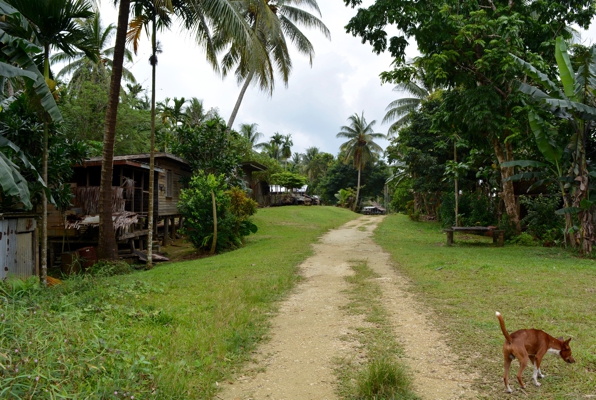 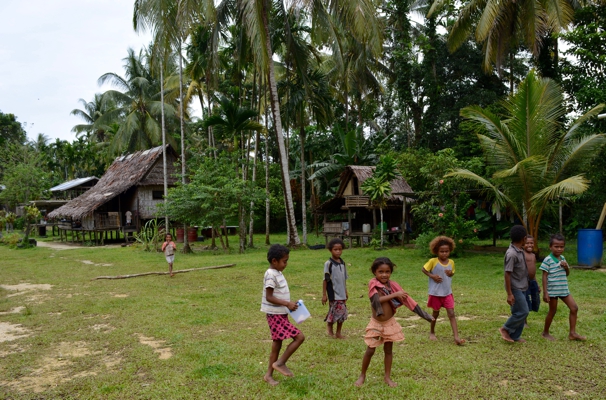 The main street of the village and starting to collect children as we walk. At one end of the main street the rotting hulks of dead machinery were being absorbed into the jungle, yellow merging into rust and greenery. They were the plant for the logging industry that had been there in the ‘80s. Having taken almost all the ebony the ‘dim dims’ had moved on, leaving their debris behind them. 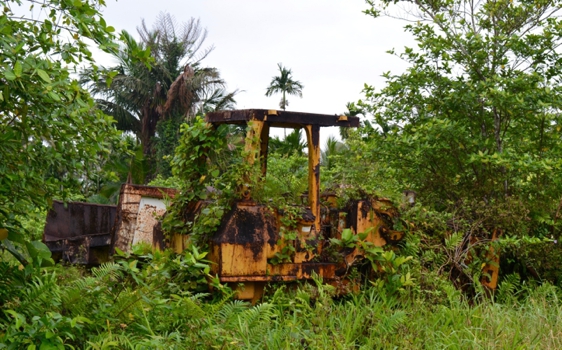 Little Jenny could not stop looking at us. She was only two and as only around one yacht visits each year she had been a babe in arms last time ‘dim dims’ were in the village. She was fascinated and terrified of us, bursting out crying if I spoke to her! The older children were not quite as overawed. As we walked we collected a train of youngsters following us just to see what we would do. Before long we had about 30 children in the party and when we got to the school they were rewarded by a gift of a football - with delighted yells they were off, boys and girls together, running as fast as they could to get a kick at the ball. 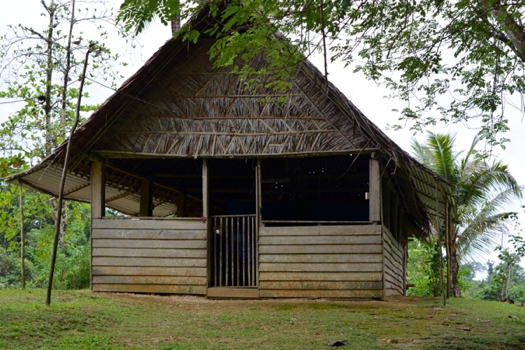 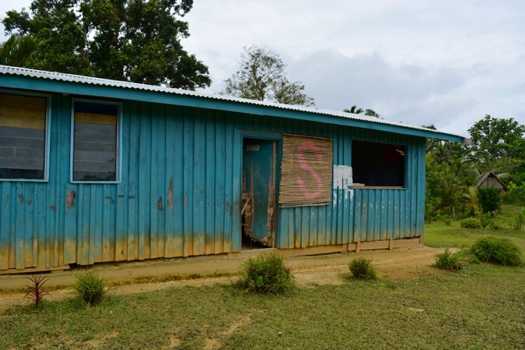 Community buildings: the chapel and the school. Our welcome in the village was undeniably warm but it was nothing compared to the climate. All the time we were in Woodlark we were wet, either from rain or from sweat. Our shirts were soaked almost as soon as we put them on and as I sit here typing the sweat is dripping off my elbows - elbows! One expects it from one’s brow but every inch of our skin glistens and droplets appear. At night one turns the pillow, then turns it again, trying to find a cool dry patch to sweat into. The cool water looks inviting all around the boat but I’m not risking it. Rivers run down from the hills across the bay, mangroves line the banks and there be crocodiles.  And those buggers can swim a long way. But a dinghy ride to greet sailing canoes helped refresh us. These fishermen had sailed all the way from Alcester Island, 50 or 60 nm away, across the open ocean, through the reef and across the lagoon, avoiding the “ Unidentified shoals, reefs and other navigational hazards” as they came. 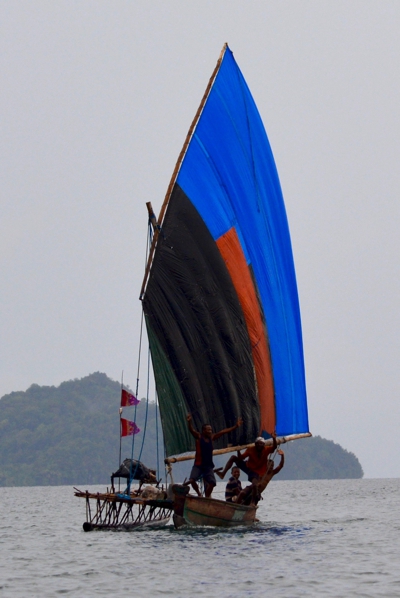 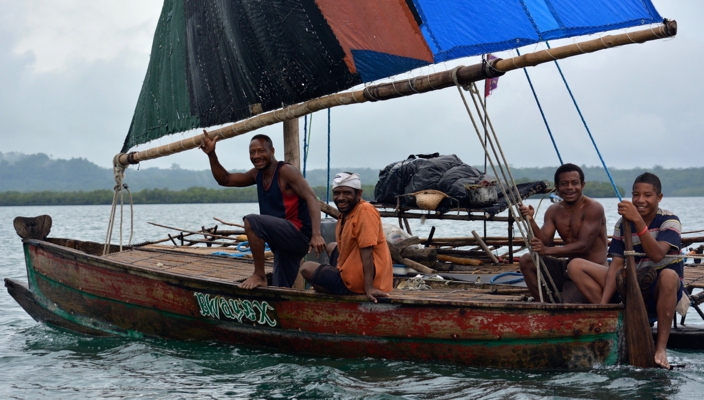 Geoffrey had told us that the villagers had gardens higher up on the hillside so we asked if the women had some produce they’d like to trade for, and maybe a basket or a carving, and we arranged to return the next day with goods to trade. Things started slowly and we traded generously with the first few comers, giving books, pens, hair clips, children’s clothes, tinned beef, rice and sugar. Pretty soon we were inundated with folk offering us produce. At one point we tried to explain that there’s just three of us, 10 coconuts and 6 papaya was more than enough, but how does one turn away a four year old presenting a coconut with a smile? In the end Geoffrey and his friends had to help us carry away our loot: two beautiful baskets; a woven sleeping mat; a graceful carving of a dolphin; more coconuts and papaya than you could shake a stick at; bundles of green beans, a foot long; 6 sugar canes; guava; spring onions; armfuls of herbs and pumpkin greens wrapped up in banana leaves; ripe banana and green banana; hot chilli peppers and fragrant pink ginger just pulled from the ground. Back at the dinghy when we were loading up, the fishermen offered us tuna wanting fishing hooks and line in exchange. We couldn’t exactly take from one boat and not the other so we added two tuna to our haul. And then we had to eat it. |